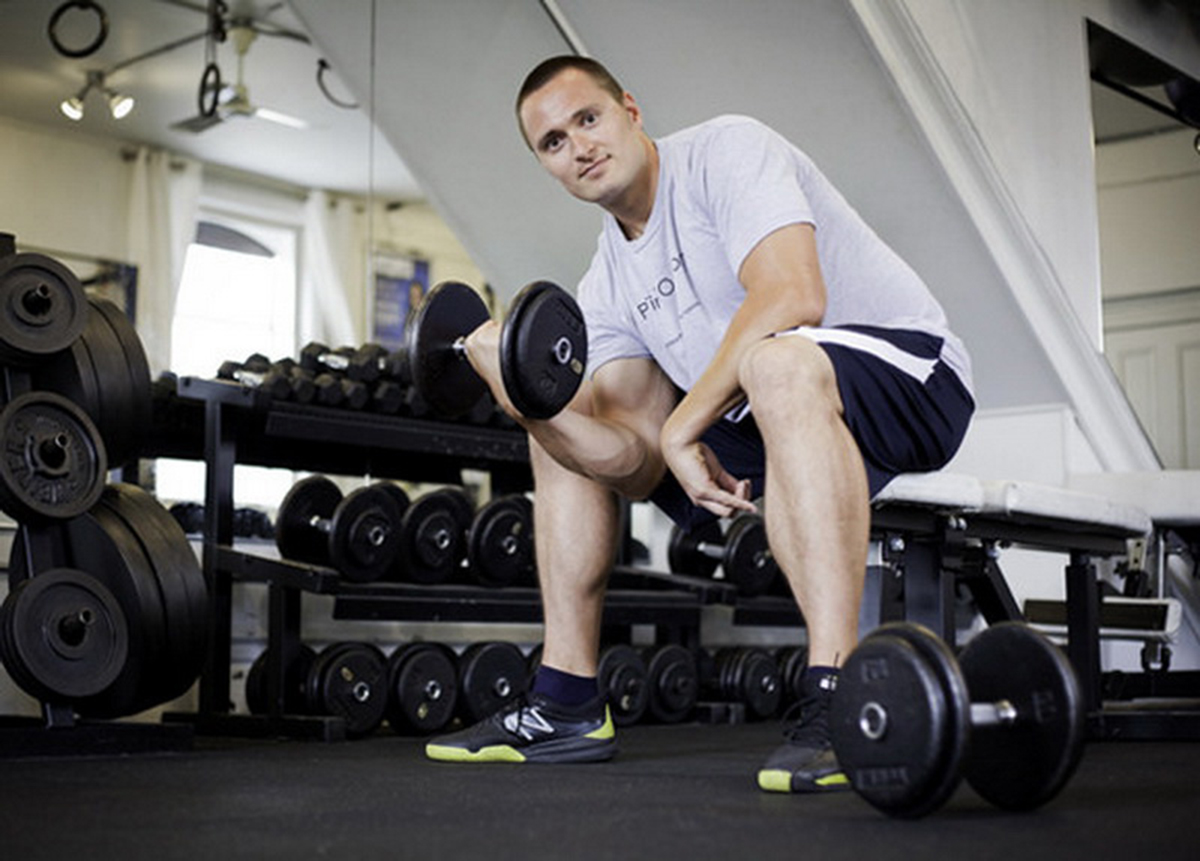Table of Contents
If compounds are multi-joint moves working more than one muscle group, isolations must be the opposite.

As discussed above, no exercise can truly be an isolation, as every muscle in your body is always working to some degree, but picture a biceps curl:
Every joint is locked in place, except for your elbow, and the prime muscle working is your biceps. It really is just focusing on that one muscle and one joint.
Other examples include lateral raises, calf raises, leg extensions, leg curls, push-downs, front raises and flyes.
Isolations Pros
- Easier to master, meaning beginners tend to err toward isolation movements
- It’s easier to get a mind muscle connection on isolations than on compounds as you can really focus on just working the one target muscle group.
- Much like a lack of direct targeting on certain muscle groups is a con when performing compound movements, isolations resolve this by allowing you to really dial in on one muscle.
- Very effective for bringing up lagging body parts.
- Less demanding, so you can get more training volume in per session.
Isolations Cons
- By going too heavy and using poor form, it’s very easy to take the focus away from the area you’re meant to be working. The biceps curls is a prime example again – using a weight that’s too heavy will cause you to throw body momentum into the movement, making it a much less effective biceps builder.
- Can place excessive strain on joints, particularly the elbows, shoulders and knees.
- You can’t lift as heavy, leading to much reduced strength gains.
- Anabolic hormone release is lower.
- Isolations aren’t as mentally demanding as compounds, and often seen as a cop out, or an excuse to shirk real training.
The Wrap Up
If you were pushed, and it came down to the wire, compounds are king when it comes to building muscle. Fortunately however, that’s not a choice you have to make, as it isn’t an either or scenario.
See Also: The Secret To Building Muscle: Less Myostatin Equals More Muscle Mass
There are exceptions to this rule, but these only really apply to advanced bodybuilders and those undergoing rehab treatment for injuries.
A leg session for example could start with three compound moves -- a squat variation, a deadlift and a lunge, before hitting your muscles with three isolations – a leg extension, a leg curl and a calf raise. The same could be done in a chest, shoulders and triceps session, by starting with bench presses, military presses and dips, before moving to flyes, lateral raises and cable push-downs.
Here are the top 10 "rules" or guidelines to consider when aiming for muscle growth:
-
Begin with compound movements like squats, deadlifts, and bench presses. Compound exercises work several muscles simultaneously. For example, squats engage the quads, hamstrings, glutes, lower back, and core. By working multiple muscles, you can lift heavier loads and stimulate more muscle fibers, resulting in better overall strength and muscle growth potential.
-
Add isolation exercises, such as bicep curls or tricep extensions, to target specific muscles. They're especially useful for honing in on muscles that might need extra attention or aren't as activated in compound movements. This helps ensure a balanced and symmetrical physique.
-
Focus on proper form to ensure effective muscle stimulation and prevent injuries. Quality over quantity is crucial. Lifting with improper form can lead to injuries and less effective workouts. Taking time to learn and practice the correct form, possibly with lighter weights initially, ensures you're engaging the right muscles and optimizing growth.
-
Aim for progressive overload by increasing weight or resistance as you progress. Muscles grow when they're challenged. By gradually increasing the weight or resistance in your exercises, you ensure continuous muscle adaptation and growth. This principle is foundational in strength training and bodybuilding.
-
Allow time for muscle recovery between workouts. Muscle growth occurs during rest, not while you're working out. When you exercise, you create micro-tears in the muscle fibers. During recovery, these tears repair and grow back stronger. Overtraining can hinder this process and lead to injuries.
-
The volume of exercises, in terms of sets and reps, is important for muscle growth. The number of sets and reps, and how they're structured, play a pivotal role in muscle hypertrophy. A common approach is 3-5 sets of 6-12 reps, but the ideal volume can vary based on goals and individual factors.
-
Your specific goals will determine the balance between compound and isolation exercises. Someone looking for overall body strength might prioritize compound movements, while someone aiming for body sculpting might incorporate more isolation exercises to fine-tune specific areas.
-
Use isolation exercises to address any weak points in your physique. Isolation exercises can be strategically used to target lagging muscles, ensuring a balanced appearance and strength.
-
Pay attention to how your body responds to different exercises, especially if you have mobility issues or past injuries. For example, someone with a knee issue might opt for box squats or leg presses instead of traditional squats.
-
Ensure you're getting proper nutrition and enough sleep to support muscle growth. Consuming adequate protein, carbohydrates, fats, and micronutrients is crucial for muscle growth. Sleep, too, plays a vital role; it's when a lot of recovery and growth occur. Aiming for 7-9 hours of quality sleep can significantly impact muscle-building outcomes.
Follow these guidelines, and you can’t go wrong in your mission for muscle.
- "What exercises should I perform if I’m trying to gain weight?", American Council on Exercise, Published June 22, 2011, https://www.acefitness.org/acefit/healthy-living-article/60/1537/what-exercises-should-i-perform-if-i-m-trying/
- Photo courtesy of 316th ESC by Flickr : www.flickr.com/photos/316thesc/7584568630/
- Photo courtesy of Eric Astrauskas by Flickr : www.flickr.com/photos/121183998@N08/13335780903/


Your thoughts on this